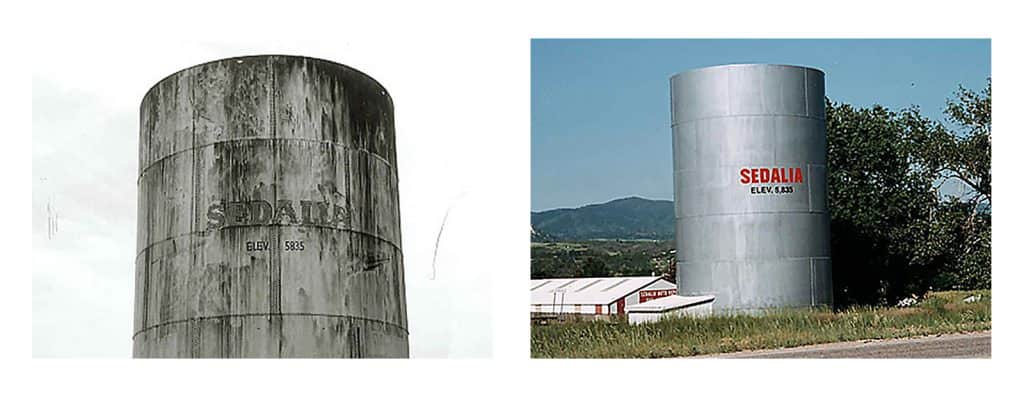If you’ve driven Highway 85 between Castle Rock and Highlands Ranch, you’ve likely spotted the 43-foot-tall silver water tank at the edge of Sedalia proudly announcing that the town sits at an elevation of 5835 feet.
In 1906 the Atchison Topeka and Santa Fe Railroad unknowingly granted this water storage facility a long and productive life when they constructed the tank of steel rather than the customary wood.
Known locally as the Sedalia Water Tank, this unique piece of Colorado railroad history was added to the National Register of Historic Places in 2003 as the Santa Fe Railway Water Tank, and recognized as a Douglas County Landmark in 2004.
The late 19th-century expansion of the railroads as they competed to create routes to carry Colorado’s mining riches to the Pacific Ocean was a key part of the region’s history. The building of Union Station, in Denver, from Douglas County rhyolite stone, attracted more railroads into the region, fueling the expansion.
One railroad hoping to create a southwest connection was Atchison Topeka and Santa Fe which operated a line from Pueblo to Denver running through Douglas County and Sedalia. The steam locomotives traveling those tracks required frequent replenishment of water — the largest could evaporate up to 100,000 pounds of water per hour — requiring stops at trackside water tanks like the one still standing in Sedalia.
The 140,000-gallon capacity steel tank was used for railroad purposes until the 1950s when it was deeded to the Sedalia Water and Sanitation District to be used as a storage facility for the community’s water supply.
Refurbished in 2016 to meet modern code requirements, the Sedalia Water Tank can now provide water to the local community and stand sentry over Sedalia for years to come.
Learn more about Historic Preservation in Douglas County and the County Landmarking process.

